
Do you have a question about the MIMAKI CF-1215 and is the answer not in the manual?
| Model | CF-1215 |
|---|---|
| Category | Plotter |
| Number of Print Heads | 1 |
| Cutting Force | 20 - 1, 000 g |
| Repeatability | ±0.1 mm |
| Power Supply | AC 100-240V, 50/60Hz |
| Maximum Speed | 1000 mm/s |
| Interface | USB |
Provides important remarks, guidance, and contact information for using the manual.
Defines symbols used for safety warnings and operational guidance.
Outlines essential safety measures for device operation and maintenance.
Details safe installation conditions regarding environment and physical space.
Highlights the device's ability to cut thick and flexible materials.
Describes features improving operational reliability and cutting accuracy.
Specifies minimum clearance and ventilation for device installation.
Details the maximum operational cutting dimensions for the device models.
Guidance on verifying included accessories based on model and application.
Details main unit parts, electrical box, blower, head, and operation panel.
Procedures for connecting signal, interface, and power cables for the device and blower.
Steps for safely turning the device on/off and using the emergency stop function.
Explains switching between LOCAL and REMOTE operation modes and LCD indications.
How to set device functions to match computer specifications for connection.
Procedures for securing materials using vacuum or adhesive tape.
Instructions for setting blade protrusion for various cutter holders.
Guidance on mounting pens, cutters, and rollers to the head units.
Steps to set the correct vertical distance between the head and the work.
How to install the work holder to prevent material movement after cutting.
How to choose and assign heads and tools for specific tasks.
Configuration of operational parameters like speed, pressure, and offsets for selected tools.
Performing test cuts to verify settings and tool alignment.
Defining the precise boundaries for the cutting or plotting operation.
Establishing the reference starting point for cutting or plotting.
Procedures for pausing and resuming active cutting, plotting, or creasing operations.
Explains fundamental operations within the LOCAL menu, including tool selection and conditions.
Visual guide outlining the sequence of basic operational steps.
Procedures for manually positioning the cutting head using VIEW function or jog keys.
Method for securing materials onto the cutting panel for processing.
Steps to properly set the blade or pen tip protrusion.
Instructions for mounting various cutting tools and pens onto the device head.
Process for setting the correct vertical distance between the head and the work.
How to install the work holder to prevent material movement after cutting.
Guide to choosing and assigning heads and tools for specific tasks.
Configuration of operational parameters like speed, pressure, and offsets for selected tools.
Performing test cuts to verify settings and tool alignment.
Defining the precise boundaries for the cutting or plotting operation.
Establishing the reference starting point for cutting or plotting.
Procedures for pausing and resuming active cutting, plotting, or creasing operations.
Addresses issues like insufficient cutting depth and uncut work sections.
Guides users through diagnosing issues when the device shows no error messages.
Lists errors that users can resolve with provided instructions.
Identifies errors that necessitate professional maintenance or support.
How to assign pen numbers to specific tools for plotting and cutting.
Function to re-execute previous cutting jobs without re-transmitting data.
Configures multiple cutting passes with varying pressure for difficult materials.
Enables single-stroke cutting for non-connected line segments.
Adjusts the lifting amount of the tool to reduce cutting time.
Specifies whether measurements are displayed in millimeters or inches.
Configures dummy cutting for orienting the swievel cutter blade.
Manages communication settings for connecting the device to a computer.
Calibrates the device's X/Y axes to match printed ruled lines on the work.
Self-test procedures to check cutting performance and sample patterns.
Executing data and parameter dumps for diagnostics.

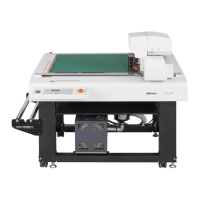
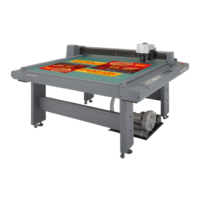
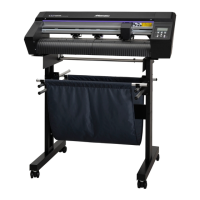
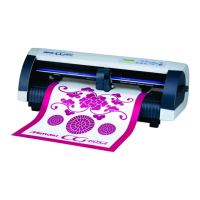

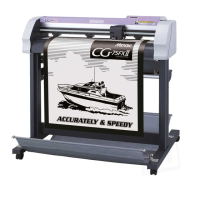



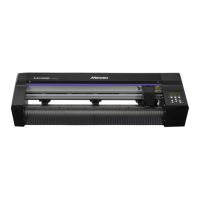
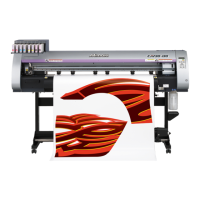
